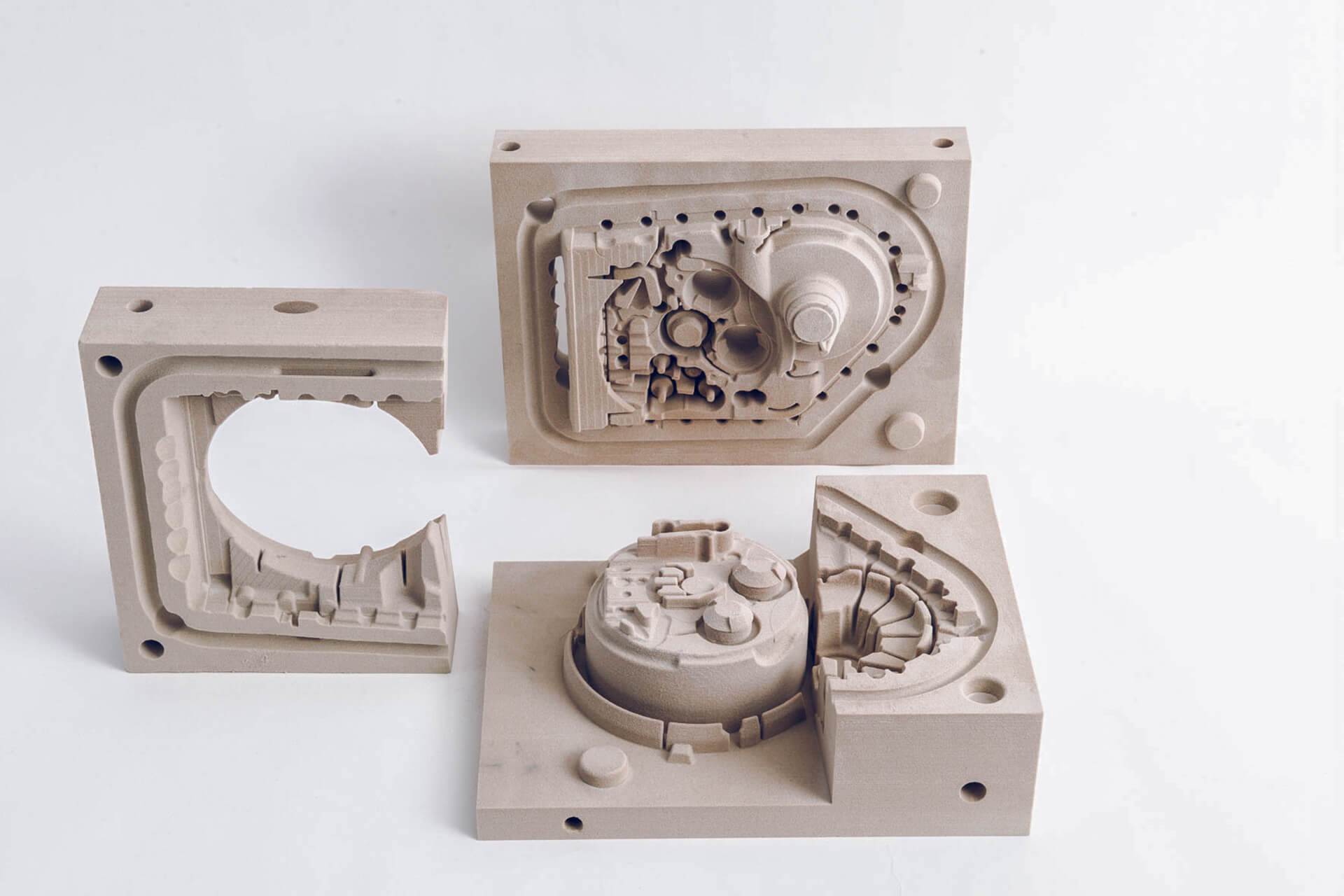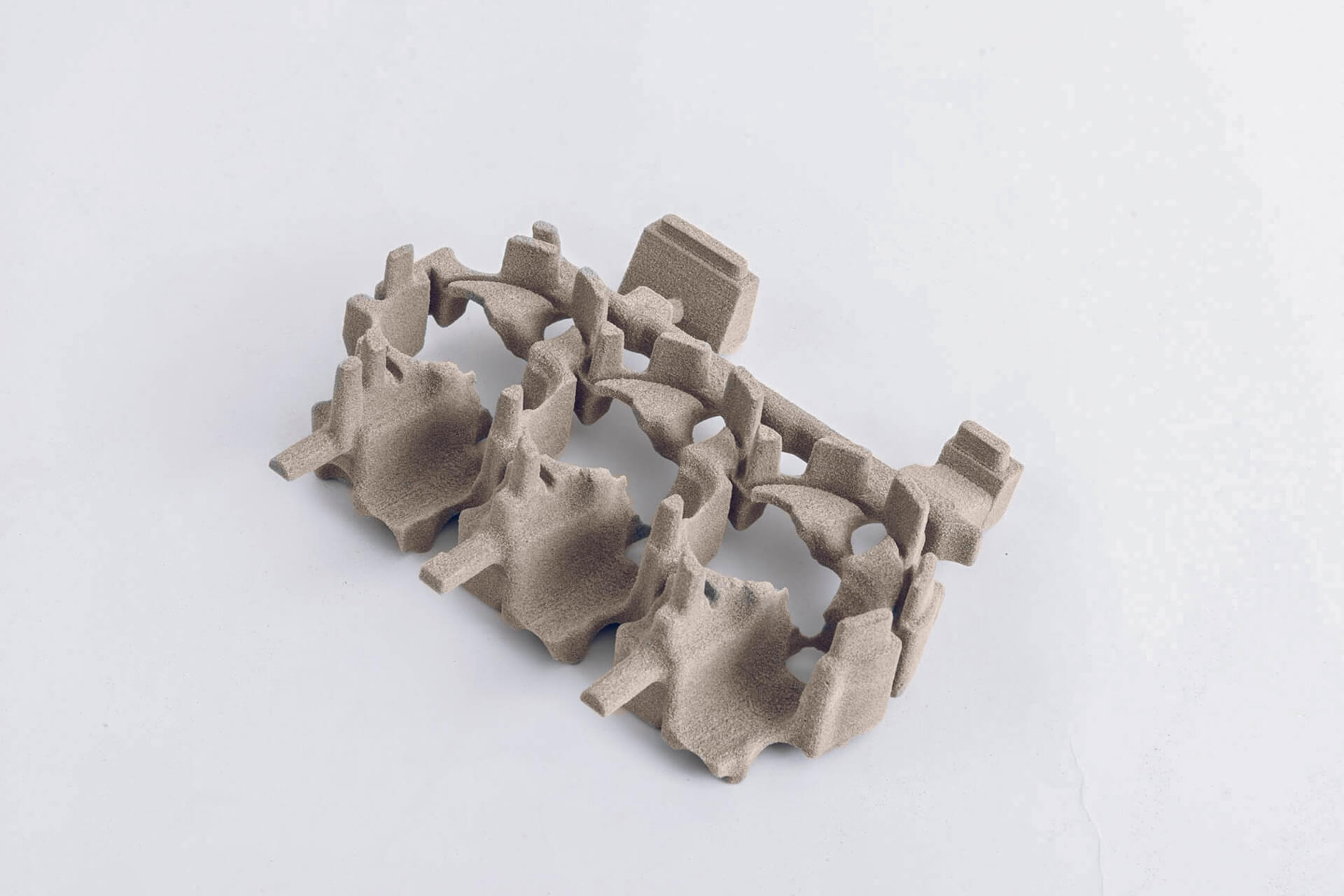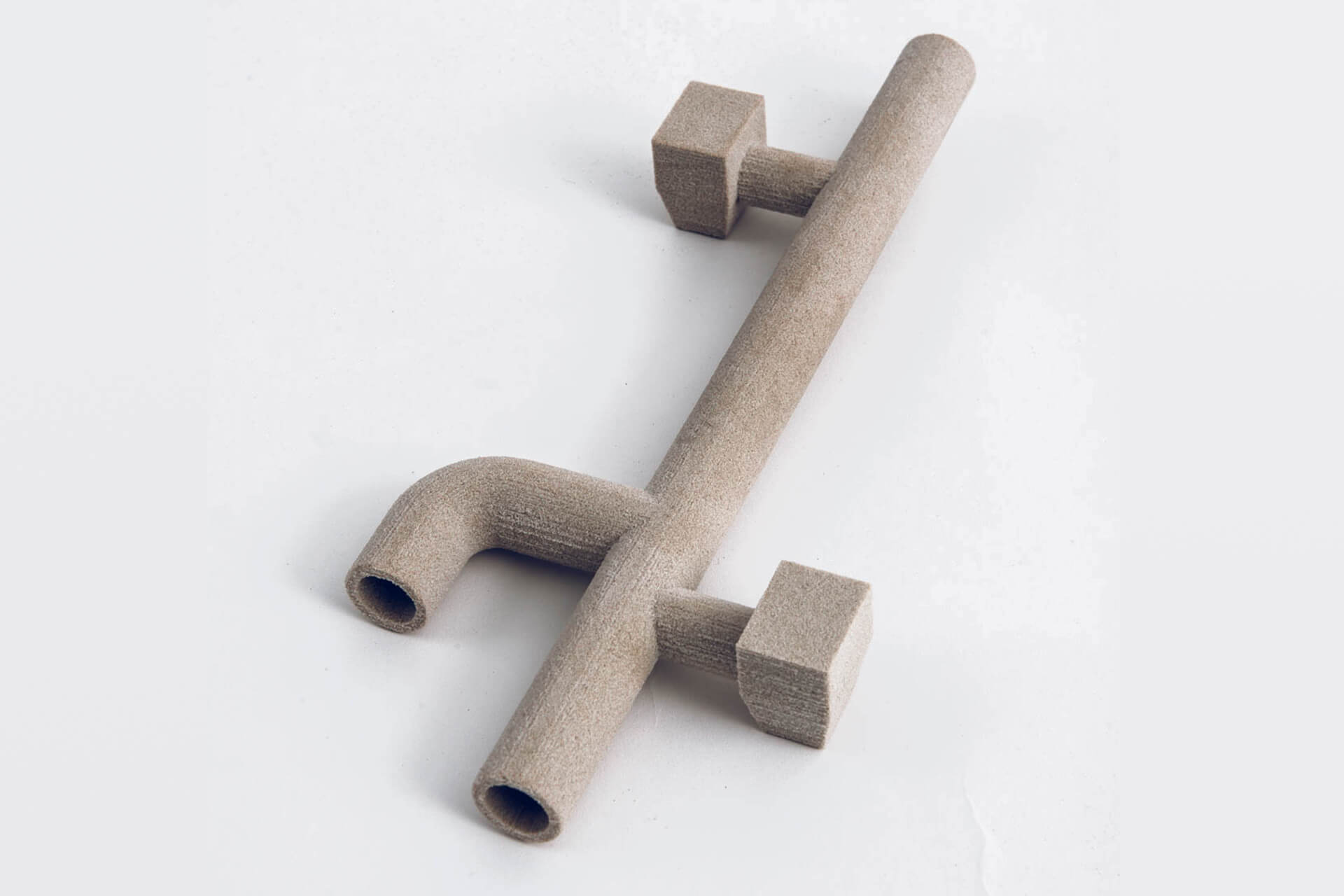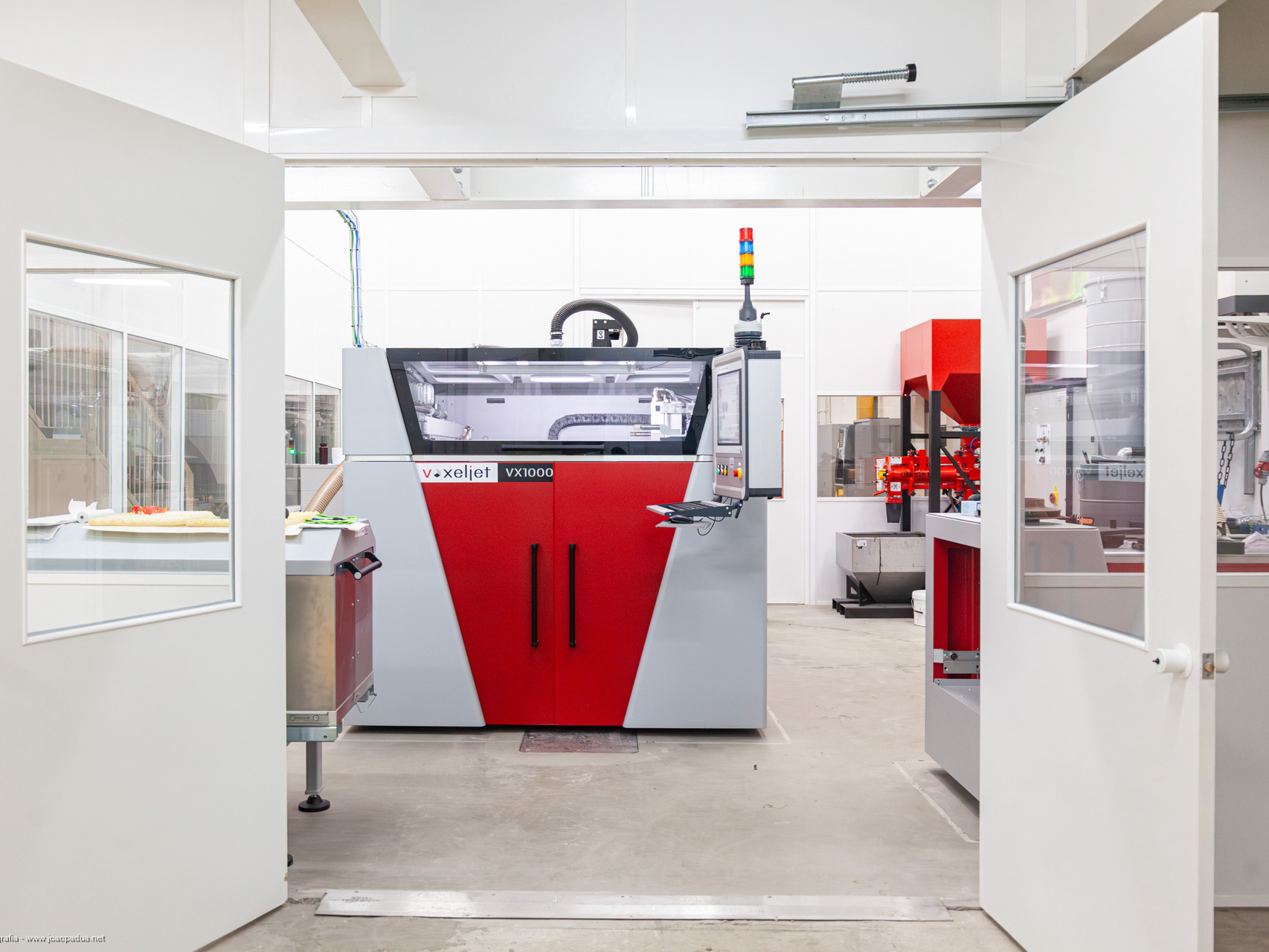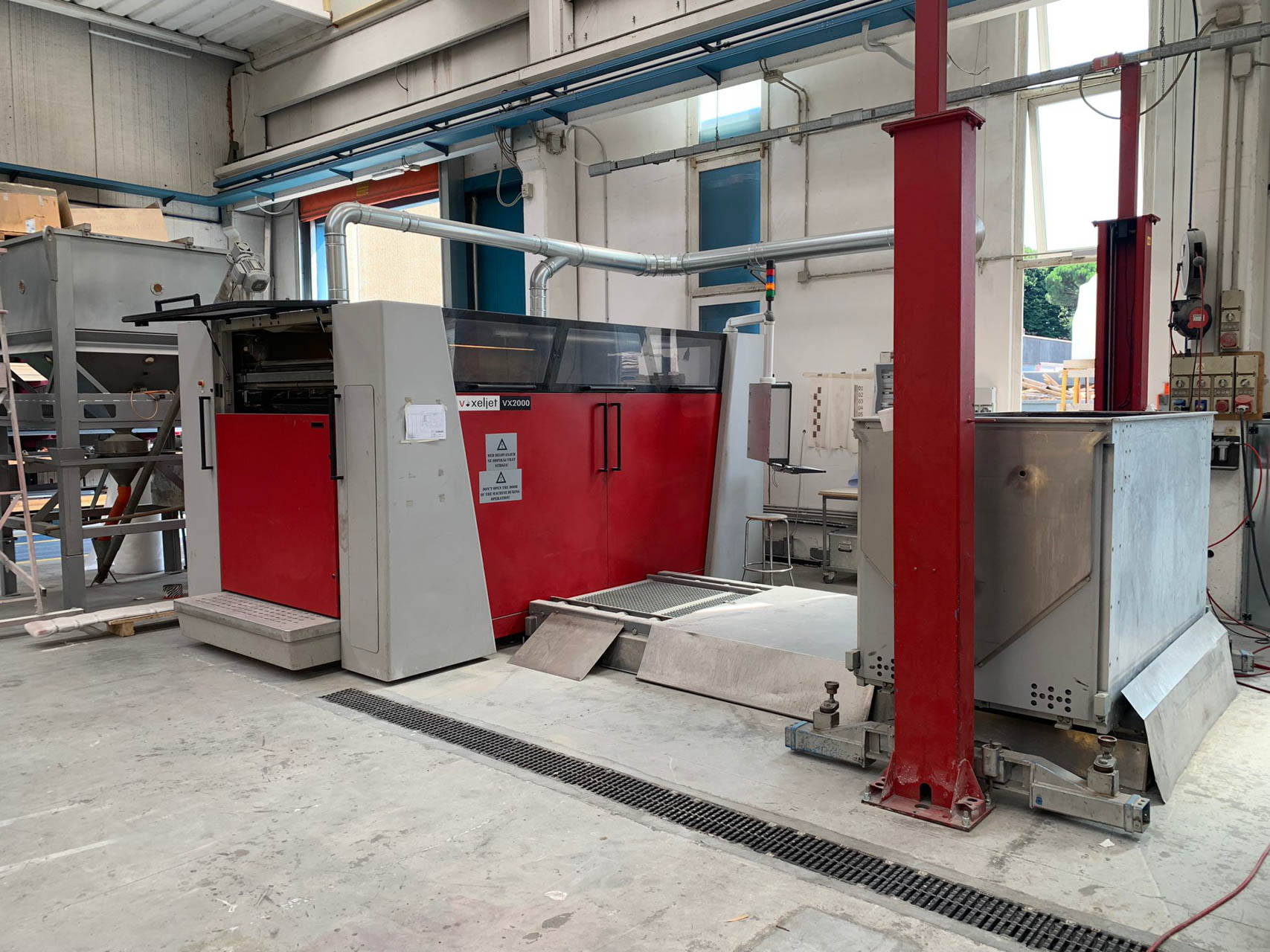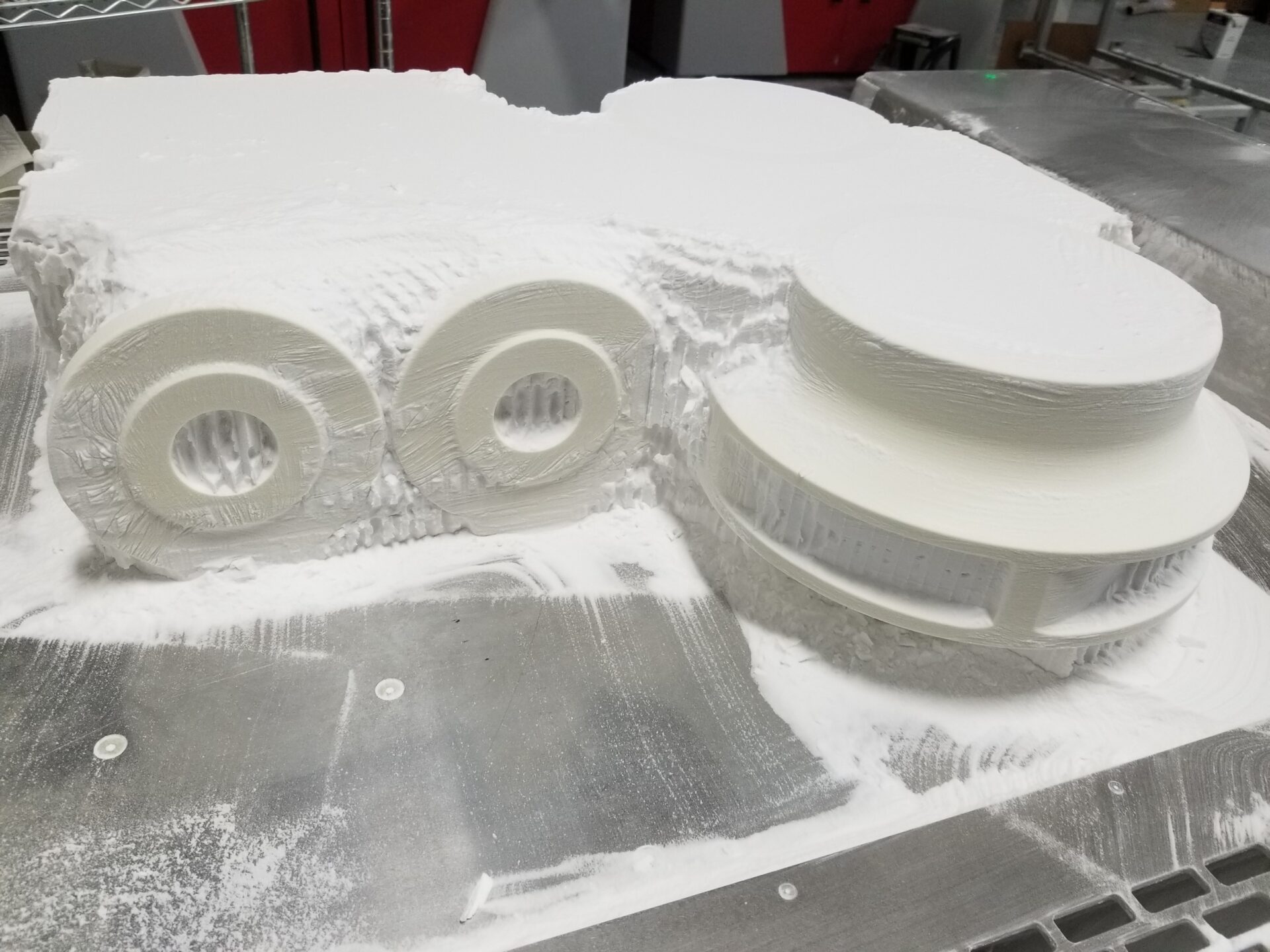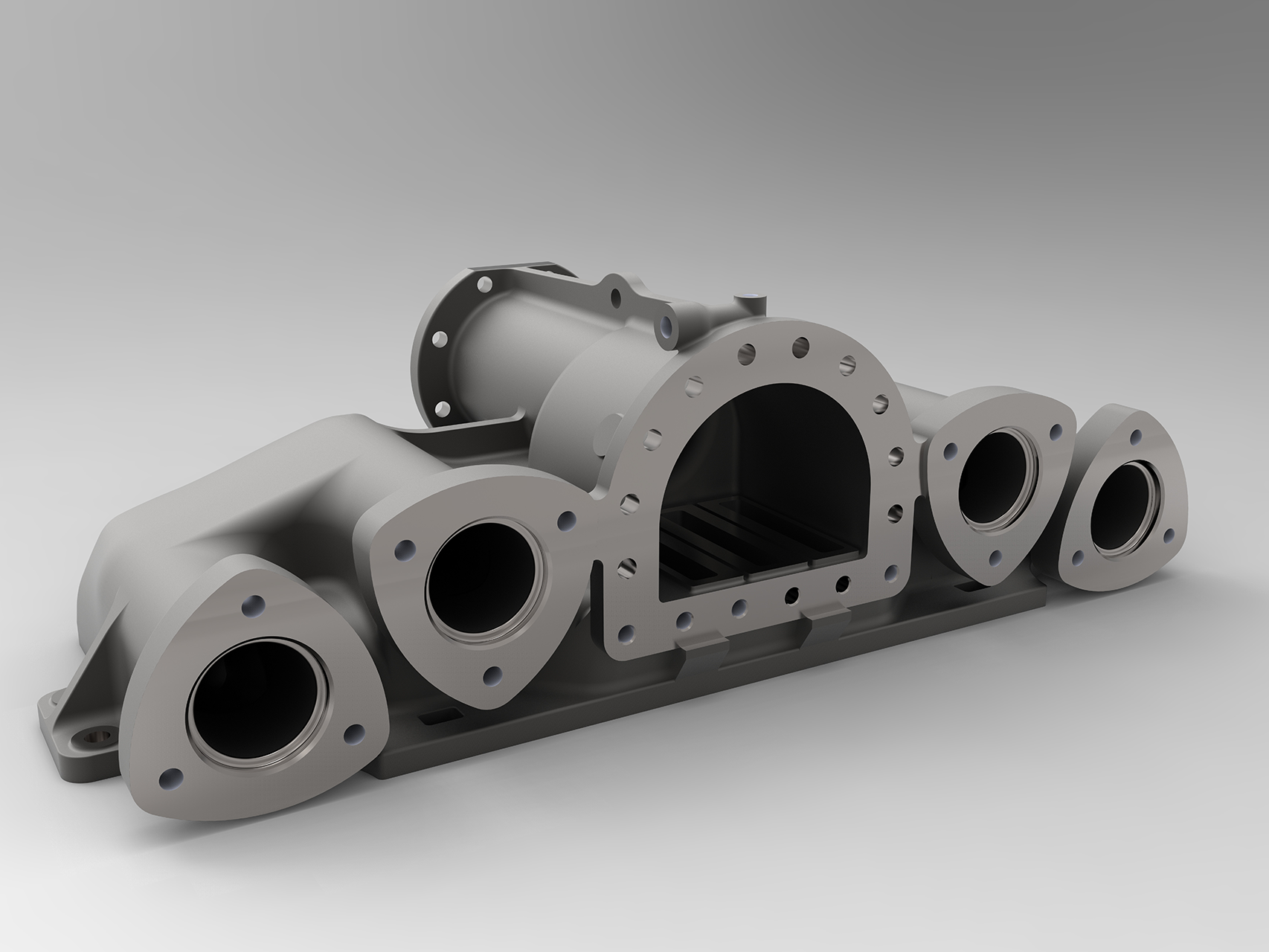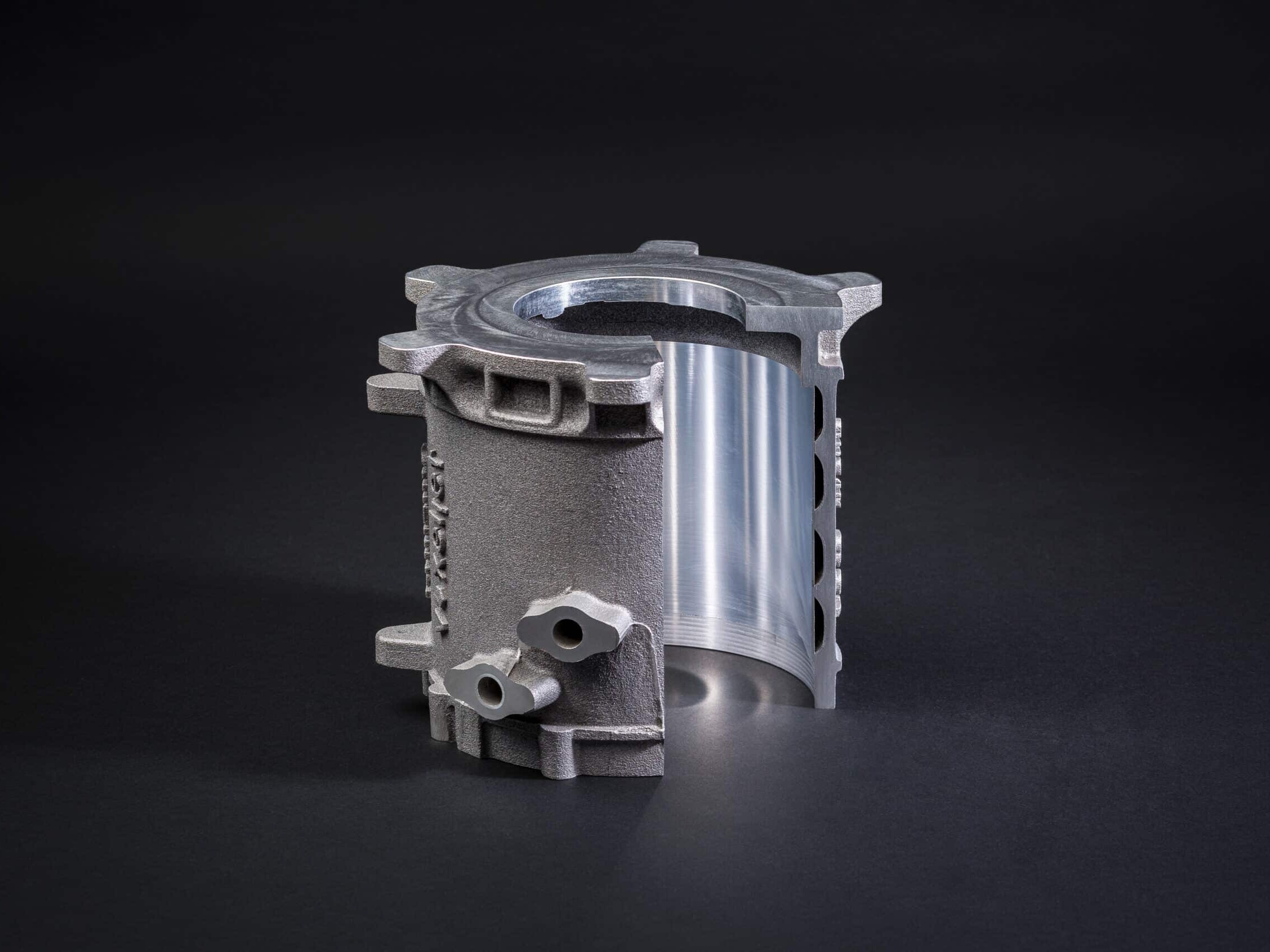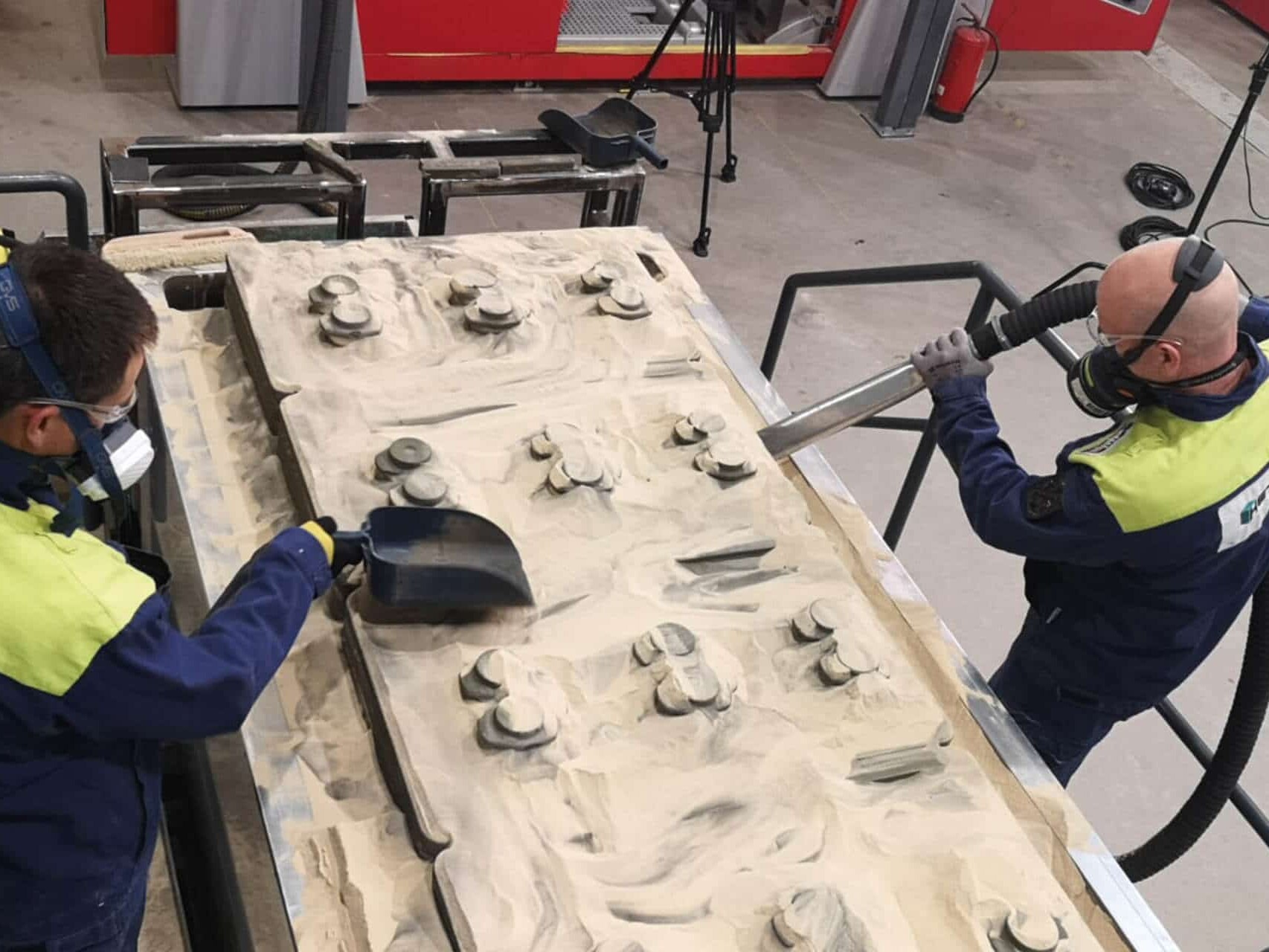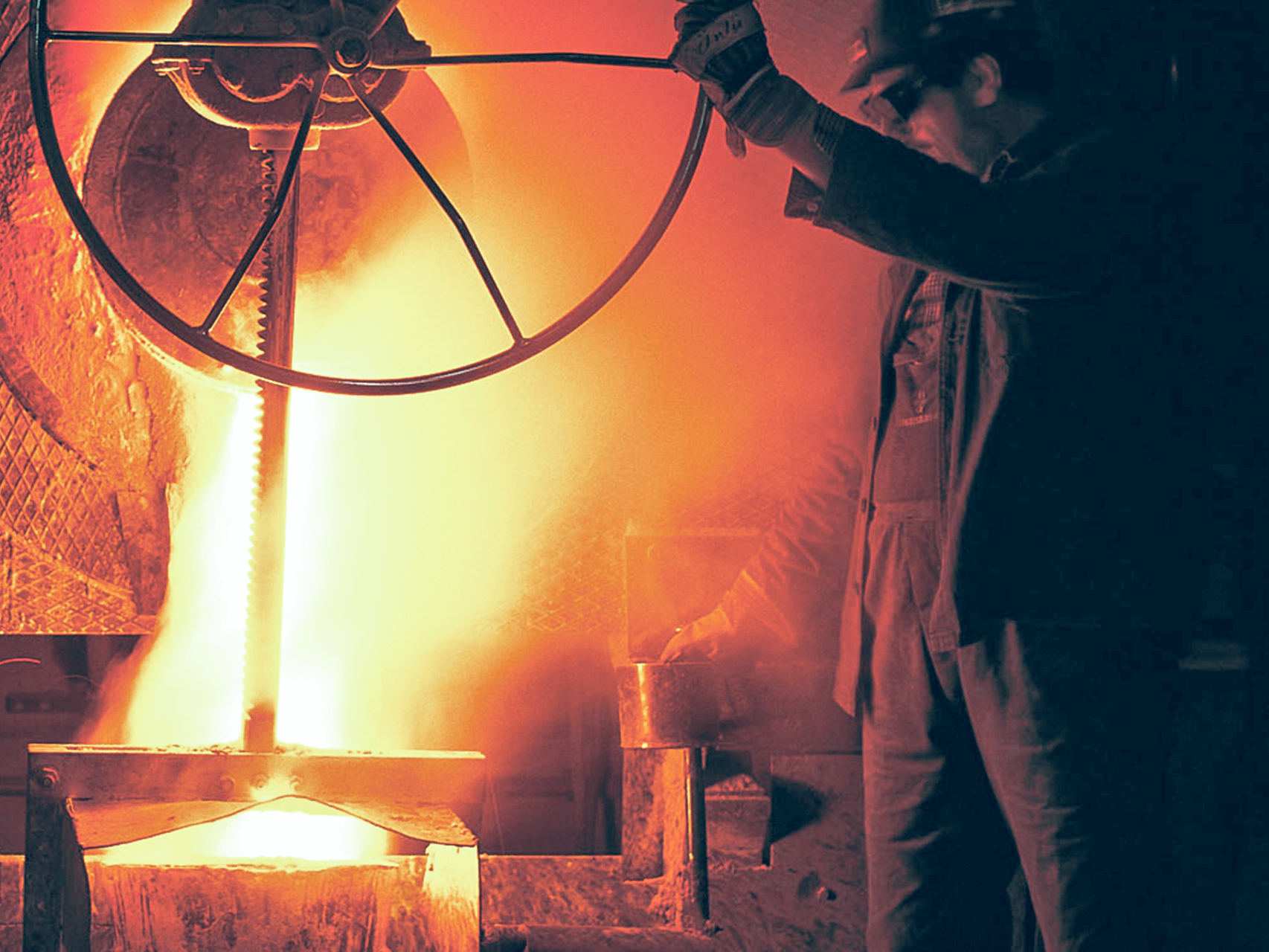- Home
- Case Studies
- Foundry
- Phenolic resin-based 3D printing in foundry technology
Environmentally friendly and economical:Phenolic resin based 3D printing
This technology has already opened up a new possibility for the foundry industry, namely the fast and economic production of complex castings. Classic production processes show weaknesses or are reaching their limits. With 3D printing technology, whether for prototypes, individual parts or small series, seemingly impossible geometries can be produced quickly, precisely and cost-effectively. Speed and free design possibilities are the key features of this technology.
In addition, the use of large-format 3D printing systems and a wide range of materials for many sectors opens up more and more new possibilities for use. In the meantime, the technology is being used in the automobile industry for engineering, the pump industry and aviation.
A new material’s system using phenolic resin based binders offers advantages in terms of strength, recyclability, reduced gas consumption and environmental friendliness.
Economic production of prototypes and small series
Through the toolless production of sand moulds and sand cores, anything from individual parts to small series of several thousand parts can be produced economically. The complexity of forms and cores are no object for 3D printing, unlike conventional production. This is because the cost of 3D printing is not tied to the complexity of the component.
Firstly, undercuts and draft angles do not need to be considered. Secondly, necessary casting technologies such as gating systems can be constructed and communicated directly in the configuration. In addition, changes to components can be made flexibly, quickly and easily. The aim is to significantly reduce the time and costs involved in form and core production and to be able to economially produce complex geometries Therefore, a hybrid design combining 3D printing and conventional production can be used as an option.
In the specific case of the production of a sand core for a turbine wheel, these factors can be particularly significant. In conventional production, the individual segments of the paddle wheel core must assembled, which is costly. However, with 3D printing, the entire turbine core can be produced in a single piece. This means that moulded parts can be assembled and cast in a simple, accurate and reproducible manner.
Requirements for new material proceses in sand printing
A material system that has already been tried and tested for a wide range of alloys and with years of experience offers a printing process that uses a cold-curing furan resin as a binder (Organic Direct Binding – or ODB for short) for bonding the quartz sand layers together. However, this process which can only be attached via core markings in the production of delicate cores in particular, thereby tends to reach its limits. Poor casting surfaces, e.g. through mineralisation, is a good reason for alternative special sands. Here, for example, kerphalite and cerabeads sands, some of which can be further mixed with additives, offer solutions, but are significantly more expensive than quartz sand.
A newly-developed 3D sand process, which is an alternative to the ODB process, is the so-called Phenol-Direct-Binding method, PDB process for short. Like for the ODB process, a thin layer of sand is initially applied. After the layered application of the sand, the phenol-based binding material is applied to the sand using a print head. The final stage in the process involves placing an infrared lamp over the construction field to heat up the sand and thus cure the binding material. The building platform is reduced to a lamination strength. Subsequently, the coating is followed by a new layer of particulate material subject to simultaneous heating. The process is then continued until the molded part is printed in full.
Advantages of phenol direct binding
In direct comparison, the new PDB process has many advantages over the conventional ODB process.
Long and thin cores are becoming more and more demanding, which is why our foundries are increasingly reaching their limits, despite their design freedom in furan resin-based 3D printing. In a particular case concerning a cylinder head spout, the water jacket core repeatedly broke because the strength in the printing process did not withstand the pressure of the molten metal. An “upright” casting, in order to exert a low bending moment on the core, requires no improvement. Depending on the customer's requirements, the binder content and the annealing loss can be flexibly adapted, which ultimately results in the desired outcome for the core mentioned, printed in PDB, with a bending strength of 390 N/cm².
Alexander Kudernatsch, Vice President Servicesvoxeljet AG
In the automobile industry in particular, sand cores are increasingly complex in their nature. Examples here are water jacket cores, hydraulic components or costly exhaust manifold cores. We have already seen increased bending strength from the printed PDB parts (250-500 N/cm² – strength based on the orientation in the assembly space) over ODB parts (230-330 N/cm² – strength based on the orientation in the assembly room).
In addition, the new PDB process is more environmentally friendly since the excess sand is nearly 100% recycled and can be reused and the binding material offers reduced pollutant content.
Kudernatsch: “In addition to the current use of quartz sand, we see further potential in the use of special sands in the future. Since we work with a thermosetting resin, we can print with different particle materials in the PDB process. In addition, qualified raw material is processed in a raw state, saving additional process materials and hardware such as activators and mixing equipment. After qualification of the sand, machine customers can also obtain it directly on site which reduces the logistics costs and expenses significantly”.
Based on the great demand and emerging machine delivery, there is currently only internal limited capacity for customer PDB orders (available dimensions 1000 x 600 x 500mm). “Nonetheless, we print test parts for our customers to provide an overview of the casting behaviour of the phenol parts,” says Kudernatsch. The plan for 2017 is to further advance PDB machine capacity to meet increasing demand.
Further Case Studies
3D printing for sand casting in Portugal
CINFU is a Portugal-based training and innovation centre for the foundry industry. With a VX1000 3D printer in house, CINFU is gaining significant adaptive advantages for the foundry industry.
Lanulfi Models optimizes mold making with VX2000
The integration of voxeljet’s VX2000 has redefined Lanulfis approach to metal casting. It offers significant reductions in lead times and enhances design capabilities.
PMMA 3D printing conquers North America
Express Prototyping belongs to the leading experts for 3D printing investement casting patterns in North America. Learn from the CEO Thomas Müller how he established the business and how he sees the future.
Boro Foundry – Superheater Header
Using the combination of sand and 3D printing, the British foundry Boro Foundry was able to produce a flawless spare part for a steam locomotive.
3D printing for optimized electric motors
Aiona Cast has filed a patent application to significantly optimize electric motors. The company produced a prototype using 3D printing.
With a new VX2000, a 3D sand printer for metal casting, Hetitec produces finished castings in a matter of days.
Printed castings for investment casting
Whether it’s aerospace, automotive or design applications, the us-based award-winning foundry Aristo Cast counts on 3D printed patters for investment casting.
3D Printing Solutions
Want to learn more about us and 3D printing? Click here for the entire voxeljet solution portfolio.



















